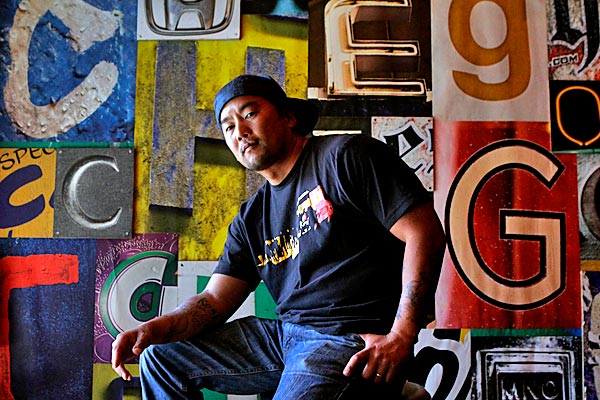The only other known phenomenon of similar density is Four Dollar 40 Night at Babs’ in Ann Arbor, Michigan.
Here's a pretty old post from the blog archives of Geekery Today; it was written about 14 years ago, in 2011, on the World Wide Web.
Oh, God, it’s like every hipster joke in the Universe was pulled together and compressed until they reached the Schwarzchild radius and formed a humor event horizon — where no attempt at satire, no matter how ridiculous, can escape the gravitational pull of reality. And so these words appeared in print — not in the Onion but in the Los Angeles Times.
A wrong turn for L.A.’s food truck scene?

Kogi chef Roy Choi thinks some people miss the point of food trucks.
. . . [RoadStoves co-owner Josh] Hiller is not alone in feeling that what was once an exciting, underground food scene driven by a punk rock aesthetic and an exploratory mentality is swiftly becoming a mainstream, bottom-line-obsessed maze of infighting and politics.
When Kogi started, there were only a few new-wave food trucks on the scene; now that number is hovering near 200, says Hiller. And where experimental entrepreneurs once dominated, corporate players such as Jack in the Box and Sizzler are entering the fray.
There are other issues too, including a wealth of copycat trucks and the sense that many entering the business have no culinary experience but expect to make a fortune.
(If you are curious, the rest of the story is more or less the following: self-consciously quirky gourmet
food trucks have been all the rage for a couple years.[1] Now the market is getting competitive, and the first-movers are discovering, holy crap, that mature markets without high barriers to entry are often no longer dominated
by experimental entrepreneurs.
Because low overhead means lots of competition, and economic rents eventually dissipate as all those entrepreneurial discoveries and the results of all that market experimentation get diffused throughout society. New players jump in and incumbents have to either move on to the next big discovery, or accept the lower margins for normal business. But like a lot of folks in niche markets, their first response to competition has been to toss some indie-crafty-funk bombs about how incumbents shouldn’t have to deal with economic entropy or take some losses or work harder to please customers who are enjoying ever more options, because, dammit, they were into this scene before it got cool. Really, I like what they are doing, and so I hope they have a second response. Meanwhile, the other big squeeze on their margins, and on the viability of funky alternative street food — that is, all the regulations that are starting to crack down,
and the sharp ratchet effect that this has on the fixed costs of operating — is treated as if it were simply an economic fact of nature. Rather than blaming peaceful competitors for cannibalizing
your
business, perhaps the energy and the outrage would be better directed at the belligerent, controlling politicos who whose periodic panic attacks are dignified as an attempt to issues presented by … nascent food truck cultures.
(Actually, the folks who run food trucks and the folks who eat at them have been doing just fine; issues
here are the city councils’ — but we’d all be better off if they were no longer able to make their control issues our problem.) Anyway, when margins are being squeezed there are two sides — the competitive pressure downwards on revenues, and the political pressure upwards on fixed costs. The downward pressure is from an essentially peaceful activity and means that the rest of us can get more food from more places at less cost. The upward pressure is from an essentially coercive, dominating activity that provides no-one a cheap sandwich, and mainly benefits local regulators and established restauranteurs. The thing that’s supposed to be awesome about food trucks is how they can bring people together in all kinds of different ways by getting light-weight, creative, and driving the huge fixed costs out of the economic and social equation; why not embrace that, welcome new competition, and refocus on the domming political cartels that try to shove the huge fixed costs back in, make thinner margins so difficult to deal with, and constantly force energy to be rechanneled away from experimentation and into compliance?)
- [1]Of course, loncheras have been around for decades. What’s changed is that professional-class white people spent years mocking loncheras with borderline-racist put-downs, when not actually going to cops and city councils in an effort to violently shut them down. But thanks to a couple of smart entrepreneurial moves a couple years ago, they got sold on food trucks all of a sudden — as long as they charge high prices, offer weird or gimmicky food options, and sport an expensive new paint job — and so now all of the sudden it’s all the rage among newspaper food writers. Which is all fine, and it’s great really, and I’m glad that folks are doing well and having a bite to eat, but if you’re going to spend all your time talking up L.A.’s neighborhoods and
street food culture
and funky, independent, low-overhead, mobile alternatives to the restauranteuring status quo, you might give some props to the taco trucks that were doing it decades ago, instead of starting practically every story on the New Food Truck Armada with fuck-you lines likeIn the past few years, a new wave of food trucks has emerged, making food trucks the latest and hippest niche in the foodie world. These trucks are not the
etc. etc.↩roach coaches
of days of yore. These are sophisticated gourmet eateries where the food happens to be made in a kitchen that operates inside a truck,
Discussed at radgeek.com /#
Rad Geek People's Daily 2016-09-05 – On. Every. Corner.: